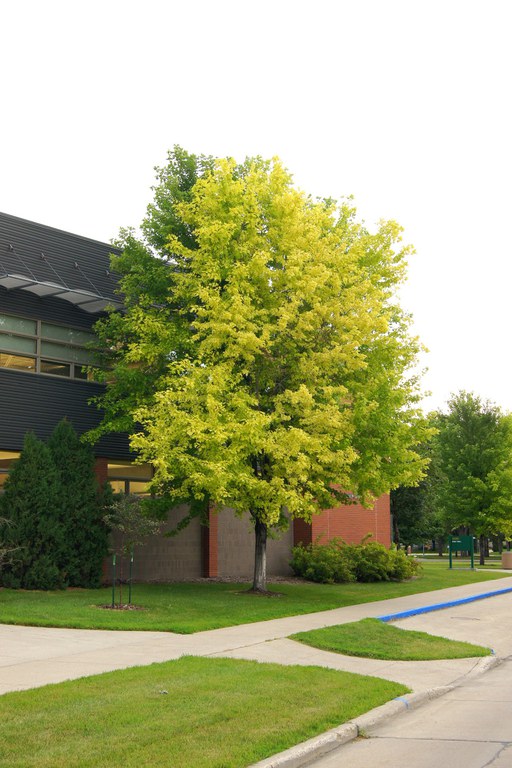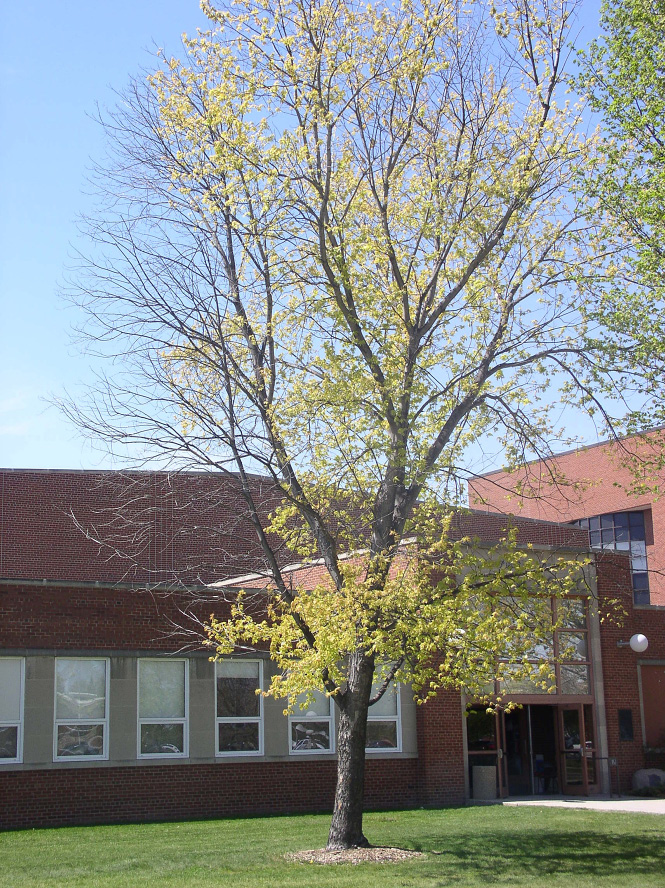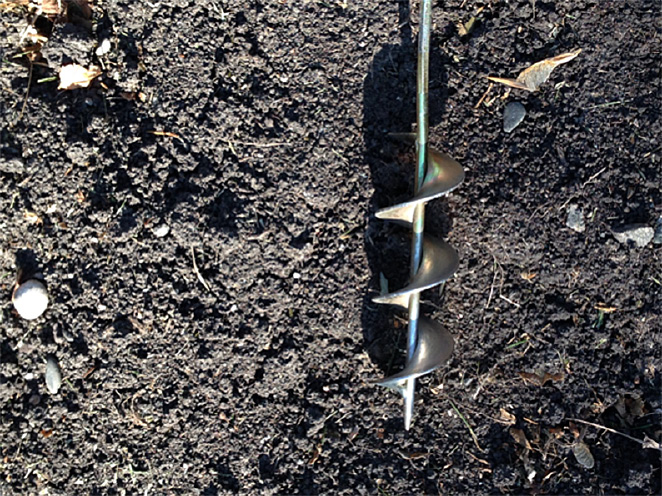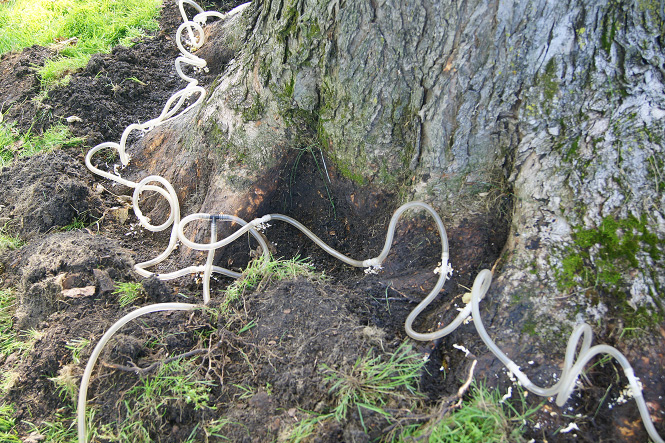Soils amendments can be used to acidify the soil. Lowering the soil pH is difficult, and results last only one to three years.
Elemental sulfur is relatively inexpensive but will take several months to a couple of years to take full effect. Soil amendments such as sulfur must be incorporated into the soil around the tree or shrub. Treatments should extend beyond the dripline, or the edge of the crown.
If bare soil surrounds the tree or shrub, apply at the rate indicated in Table 2 and rake it into the soil. Sulfur amending can be difficult to do if a lawn surrounds the tree because of the potential for lawn damage and the difficulties of incorporating the sulfur into the soil.
One method is to core aerate the lawn around the tree in the spring or fall and then apply elemental sulfur in increments of no more than 0.5 pound/100 square feet per application. The sulfur should be watered into the soil thoroughly.
Additional applications may be made in the spring and fall in conjunction with core aeration until the full amount listed in Table 2 has been incorporated. Do not apply sulfur to lawns in the summer because high temperatures increase the possibility of the grass blades being burned.
Table 2. Elemental sulfur application rates in pounds/100 square feet to lower soil pH by the indicated amount. If applying elemental sulfur to lawns rather than bare soil, do not apply more than 0.5 pound per 100 square feet at any one time. Water thoroughly after application. Sulfur rates adapted from "Interpreting the NDSU Soil Test Analysis for Managing Turfgrass" (H1824).
| Soil pH Change |
Sandy Soils |
Loany Soils |
Clay Soils |
| 8.0 to 6.5 |
2.8 |
3.4 |
4.6 |
| 7.5 to 6.5 |
1.1 |
1.8 |
2.3 |
| 7.0 to 6.5 |
0.2 |
0.4 |
0.7 |
The addition of elemental sulfur to acidify the soil is more effective for loamy or sandy soils than for clay soils. For clay soils, drill a series of holes in the soil around the affected tree and backfill them with a combination of sulfur and iron-containing fertilizer.
Holes should be 1 to 3 inches wide and 12 to 18 inches deep. They can be drilled with a bulb auger or similar electric drill attachment (Figure 3). Use a mixture of equal parts elemental sulfur and granular iron sulfate (20 percent iron) to fill the bottom 8 to 14 inches of the holes. Place soil back into the top 4 inches of the hole to allow for turf growth.
Figure 3. A 3-inch bulb auger attaches to an electric drill and can be used to drill vertical pockets in the soil.
The holes should be spaced in a grid every 2 to 3 feet throughout the area covered by the tree’s root system. At a minimum, this will include the area under the canopy of the tree and go as far out into the lawn as possible, up to three times the height of the tree. Avoid damaging tree roots if possible.
Before drilling these holes, contact North Dakota One Call at 800-795-0555, 811 to make sure that all utility lines are clearly identified.
For shrubs, apply the sulfur/iron sulfate mixture by digging 4-inch-deep trenches 12 to 24 inches from the base of the shrub. Be careful not to sever any roots during digging. The trench should be filled to the depth of 1 inch with the mixture and then backfilled with 3 inches of soil.
Ammonium sulfate can acidify the soil, but it also will add extra nitrogen, which can cause excessive growth. Aluminum sulfate is not recommended because of the potential for aluminum toxicity.
Chelated iron also may be added to the soil, allowing uptake through the root system. Chelated iron is more expensive; results are relatively quick but generally last only one year. Several forms of chelated iron are available, including:
- EDTA — keeps iron soluble at pH of 6.3 and below. Not recommended for North Dakota.
- DTPA — keeps iron soluble at pH of 7.5 and below. Use only in specific situations.
- EDDHA — keeps iron soluble up to pH of 9.0. Recommended throughout North Dakota. (Table 3)
Chelated iron is easier to apply than elemental sulfur because it may be applied as a soil drench or a granule and watered into the soil. Late winter/early spring before the trees break bud is the best time to apply chelated iron. See the individual product label for additional instructions.
Table 3. EDDHA (chelated iron) products by brand name.
| Brand Name |
Company |
N-P-K Analysis |
| Sequestrene 138 |
BASF Corp. |
0-0-0 |
| Sprint® 138 |
BASF Corp. |
4-0-0 |
| Sequestar 6% |
Monterey Lawn & Garden Products |
3-0-0 |
| Ferriplus Chelated Iron |
Miller Chemical & Fertilizer Co. |
0-0-0 |
| EDDHA Iron Chelate |
Grow More |
0-0-0 |






